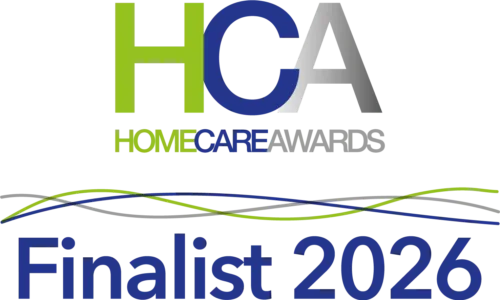
Over the years, we’ve reviewed many forecasts of prospective franchise partners – some meticulously crafted, others worryingly optimistic or incomplete. Do not let this put you off, especially if you’ve not done this before! Partnering with GoodOaks gives you access to our 1:1 business coach who will walk you through this process, ensuring you stay on track and remain realistic with your goals and forecasts.
If you’re approaching your first cash flow forecast, here are five essential takeaways to help you navigate the process and give you a realistic expectation of the first 1-2 years of trading.
- Timing matters: Your income won’t arrive instantly
Let’s use this example: If you provide 100 hours of care in July at £35 per hour, you might expect to see £3,500 in your account by the end of the month. However, the reality is different. Care businesses generally invoice in arrears due to variations between planned and actual visits. If you invoice every two weeks with a two-week payment term, most of your July earnings will arrive in August, and that’s assuming there are no payment delays.
To ease cash flow pressures and to maintain a financial cushion, you may want to consider strategies such as taking deposits and setting up direct debits. At GoodOaks, we help and support our franchise partners to implement these systems to ensure smoother cash management, keeping you afloat during those initial months.
- Don’t forget to account for your own drawings
If you need to take money out of the business to cover personal expenses – such as rent, bills, or general living costs – you must reflect this in your cash flow forecast. Many new franchise owners overlook this important step, leading to unexpected shortfalls that can put pressure on both your business and your personal finances.
It’s essential to be realistic and honest about how much you’ll need to draw from the business each month, particularly in the early stages. While it might take time for your franchise to turn a profit, your personal financial responsibilities don’t pause. Make sure you include a regular drawing as a fixed outgoing, even if it’s modest at first.
Planning this properly helps you avoid relying on emergency funds or credit, and it ensures you’re building a sustainable business model. It also gives you a clearer picture of when your business will truly break even – not just on paper, but in a way that supports your life.
3. Expect costs to rise as your business grows
While your income will (hopefully) increase, so will your costs – though not as rapidly. Expenses such as software subscriptions, insurances, regulatory fees (like CQC), and office salaries will grow alongside your business. There may be points where hiring additional office staff is crucial for expansion, but this can temporarily push you into negative cash flow until your client base catches up.
In short, scaling is rarely linear. Be prepared for moments where your costs spike ahead of revenue. Planning for these transitional phases – with adequate reserves or financing options – can help you navigate growth more smoothly and avoid being caught off guard. We support all of our franchise partners through this stage to ensure they feel confident to navigate this with ease.

- Get an expert’s perspective
In business, there are known knowns, known unknowns, and the most dangerous – unknown unknowns. A second pair of eyes from someone experienced in the industry can highlight potential blind spots. One of the major benefits of partnering with a franchise like GoodOaks is access to a seasoned and transparent team that helps you reduce these unknowns and help you make informed decisions. Our support team at HQ shares more than 130 years of combined experience in care! Between them, and with their expertise, they will guide you through each phase of your partnership with GoodOaks.
- Be pessimistic, not overly optimistic
Your cash flow forecast isn’t just a motivational tool; it’s a reality check. It should show that even if you underperform, you can still sustain operations and reach breakeven. You don’t want your business viability to depend on being in the top 10% of performers – plan conservatively so you can weather any challenges.
For example, we recently spoke to prospective partners who had been given projected figures of nearly £600k in Year 1 and £800k in Year 2 by another franchisor. While this may have been achieved by one exceptional franchisee, using it as a benchmark for a realistic forecast is risky.
Industry averages for franchised offices typically range between £200-£250k in Year 1.
Need help with your cash flow forecast?
If you’re unsure where to start, don’t worry, it’s all part of the service at GoodOaks. Our independent business coach will guide you through the process, helping you plug your numbers into our model forecast to create a bespoke plan tailored to your area and your professional goals. A solid cash flow forecast is a vital tool for long-term success, and with the right support, you can ensure your business remains financially stable and primed for growth.
Want to learn more about opportunities with GoodOaks? Call us today or click on the link to book a discovery call.


